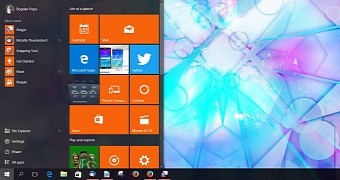Microsoft's new Windows 10 operating system has recently reached another milestone in its adventure towards the 1 billion devices goal that the company has until 2017.
Windows 10 is now running on 100 million PCs across the world, according to new data published by Petri.com, a threshold that has already been reached earlier this month and that is likely to grow significantly bigger in the coming weeks.
It's important to note that Microsoft hasn't yet acknowledged the new figures, and we've contacted the company to ask for confirmation, but they have said that there's nothing new to share on this. The latest figures Microsoft disclosed were 75 million PCs running Windows 10 earlier this month.
Faster growth than in Windows 8's case
Windows 10 is clearly performing really well, and that 1 billion devices running the new operating system goal doesn't seem too far right now, especially because only two months have passed since the debut of the software.
Just by comparing these 60-day adoption figures, it's pretty clear that Windows 10 experiences a faster growth than Windows 8, which, according to company executives, was only running on some 40 million computers after 3 months.
Windows 10, on the other hand, has one big advantage: it's offered free of charge to devices running Windows 7 and 8.1, so it's no wonder that people rush to install it. This free promo is only available until July 29, 2016, so unless you've already installed Windows 10, you might want to do it sometime in the next 10 months because time is running out.
That's exactly what Microsoft is hoping you to do because this way not only it reaches the aforementioned 1 billion devices goal but it also decreases Windows 7's market share, which continues to be the number one desktop OS with a share of around 50 percent.
The bigger problem will be encountered in 2020, when Windows 7 support is coming to an end, and Microsoft will need to upgrade all users, so doing that with Windows 10 right now could really help the company avoid another Windows XP moment.

 14 DAY TRIAL //
14 DAY TRIAL //